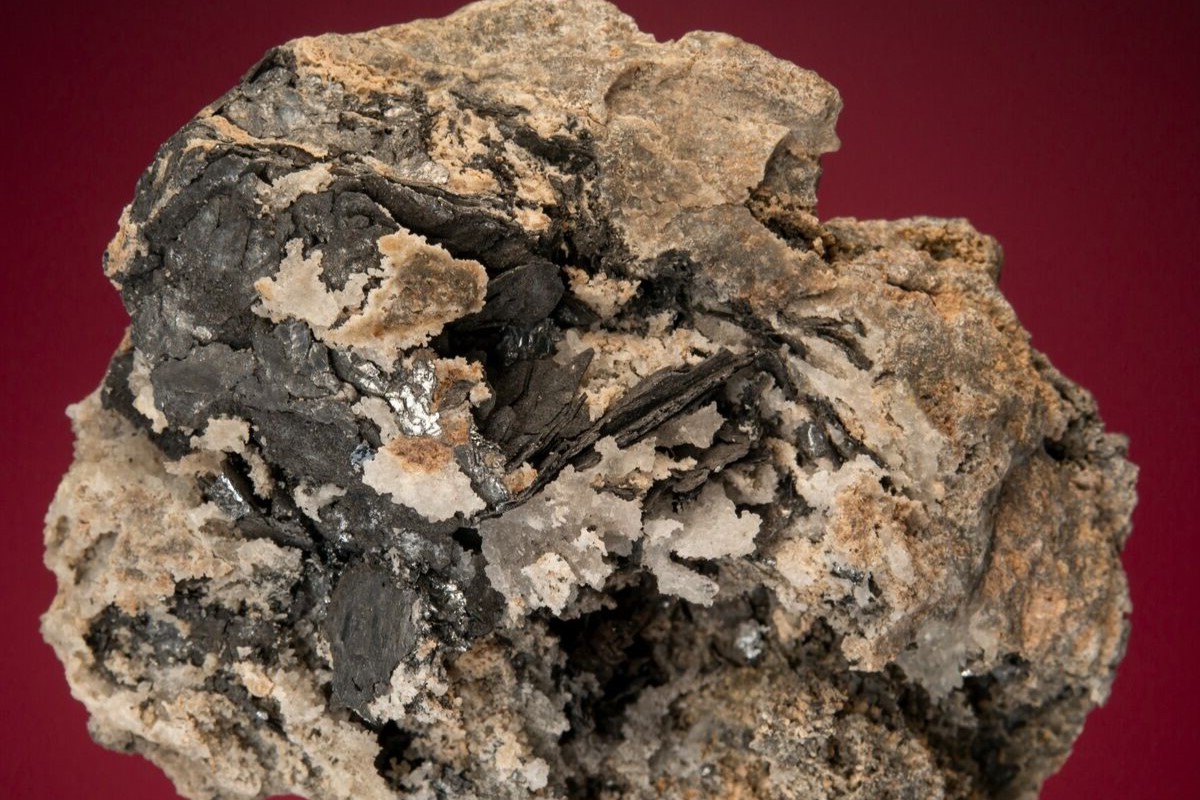
Nagyágite is a rare and intriguing mineral that captures the interest of geologists and collectors alike. Found primarily in Romania, this mineral boasts a unique composition of gold, lead, antimony, and tellurium. Did you know that Nagyágite can appear in colors ranging from steel-gray to black, often with a metallic luster? This mineral forms in hydrothermal veins, making it a fascinating subject for those studying geological processes. What sets Nagyágite apart is its complex structure and rarity, which make it a prized specimen in mineral collections. Whether you're a seasoned geologist or just curious about the natural world, learning about Nagyágite offers a glimpse into the Earth's hidden treasures.
Key Takeaways:
- Nagyágite is a rare, shiny mineral with a fascinating history. It contains gold and is found in specific regions like Romania and the USA. Collectors prize it for its unique properties and beauty.
- Nagyágite, also known as "black tellurium," has a metallic luster and can tarnish when exposed to air. It's valued for scientific study and mineral collections, and its gold content makes it economically significant.
What is Nagyágite?
Nagyágite is a rare mineral that fascinates geologists and collectors alike. Found primarily in specific regions, it holds unique properties and a rich history. Let's dive into some intriguing facts about this mineral.
-
Nagyágite is a sulfosalt mineral composed mainly of lead, gold, antimony, and tellurium.
-
It was first discovered in the Nagyág region of Romania, which is now known as Săcărâmb.
-
The mineral was named after its place of discovery, reflecting its geographical roots.
-
Nagyágite typically forms in hydrothermal veins, often associated with other telluride minerals.
Physical Properties of Nagyágite
Understanding the physical characteristics of Nagyágite can help in identifying and studying this mineral. Here are some key properties:
-
Nagyágite has a metallic luster, giving it a shiny, reflective appearance.
-
Its color ranges from steel-gray to black, making it visually distinctive.
-
The mineral has a Mohs hardness of 1.5 to 2, indicating it is quite soft.
-
It exhibits a perfect cleavage, meaning it can easily split along specific planes.
Chemical Composition and Structure
The chemical makeup and structure of Nagyágite contribute to its unique properties. Let's explore these aspects:
-
Nagyágite's chemical formula is Pb5Au(Te,Sb)4S5-8, showcasing its complex composition.
-
The mineral contains gold, which adds to its value and interest among collectors.
-
It crystallizes in the orthorhombic system, a common structure for sulfosalt minerals.
-
Nagyágite often forms thin, tabular crystals, which can be quite delicate.
Occurrence and Locations
Nagyágite is not found everywhere. Its occurrence is limited to specific geological settings. Here are some notable locations:
-
Besides Romania, Nagyágite has been found in the Altai Mountains of Russia.
-
It also occurs in the Goldfield District of Nevada, USA.
-
Other locations include the Czech Republic and Bolivia, though these are less common.
Historical and Economic Significance
The history and economic impact of Nagyágite provide insight into its importance. Here are some key points:
-
Nagyágite was first described in 1845 by Wilhelm Karl von Haidinger, an Austrian mineralogist.
-
The discovery of Nagyágite contributed to the development of mining in the Nagyág region.
-
Its gold content has made it a valuable mineral for mining operations.
-
Collectors prize Nagyágite specimens for their rarity and unique properties.
Uses and Applications
While not widely used in industry, Nagyágite has some specific applications. Let's look at these uses:
-
Nagyágite is primarily collected for scientific study and mineral collections.
-
Its gold content can be extracted, though this is not always economically viable.
-
The mineral is sometimes used in jewelry, though its softness limits its practicality.
Interesting Tidbits
Here are some fun and lesser-known facts about Nagyágite that might surprise you:
-
Nagyágite is sometimes referred to as "black tellurium" due to its color and tellurium content.
-
The mineral can tarnish when exposed to air, developing a thin film on its surface.
-
Nagyágite specimens are often displayed in museums and collections around the world, showcasing their beauty and rarity.
The Fascinating World of Nagyágite
Nagyágite, a rare and intriguing mineral, has captured the interest of geologists and collectors alike. Its unique composition of gold, lead, antimony, and tellurium makes it a standout in the mineral world. Found primarily in Romania, this mineral's metallic luster and complex structure add to its allure.
Understanding nagyágite's properties and formation helps scientists learn more about geological processes. For collectors, owning a piece of nagyágite means having a slice of Earth's history. Its rarity and beauty make it a prized addition to any collection.
Whether you're a geology enthusiast or a casual collector, nagyágite offers a glimpse into the planet's fascinating mineral diversity. Keep an eye out for this remarkable mineral, and you'll appreciate the natural wonders hidden beneath our feet.
Frequently Asked Questions
Was this page helpful?
Our commitment to delivering trustworthy and engaging content is at the heart of what we do. Each fact on our site is contributed by real users like you, bringing a wealth of diverse insights and information. To ensure the highest standards of accuracy and reliability, our dedicated editors meticulously review each submission. This process guarantees that the facts we share are not only fascinating but also credible. Trust in our commitment to quality and authenticity as you explore and learn with us.
